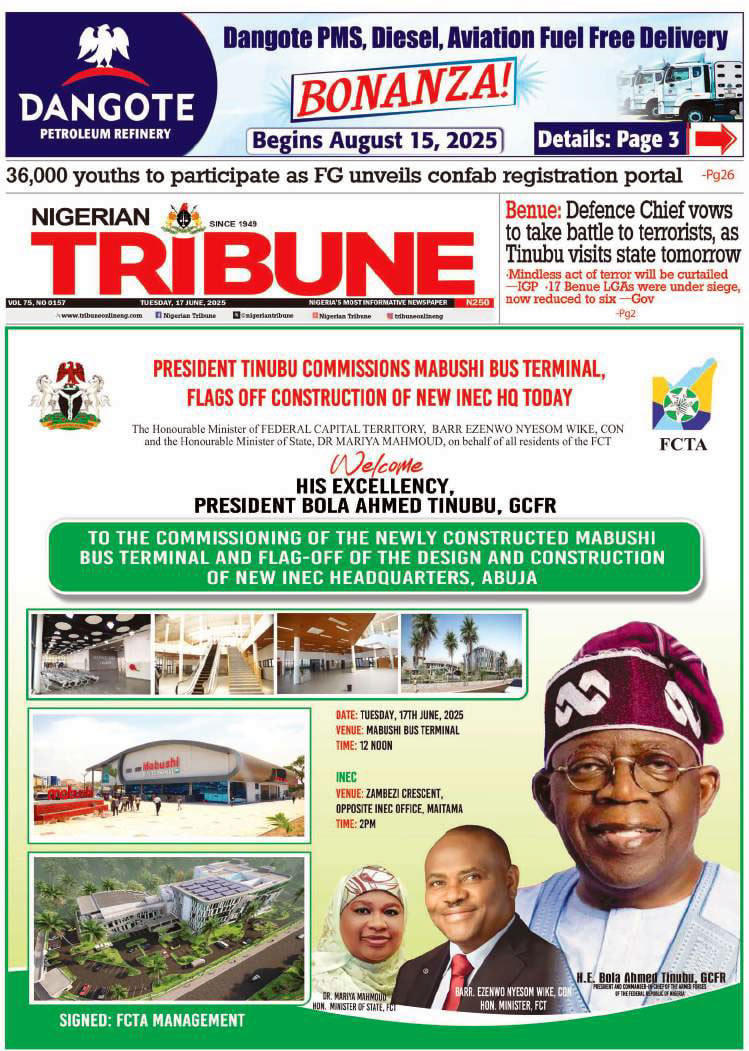On today’s spotlight on medical professionals and public health experts transforming healthcare access and innovation, Dr. Sunday Oluwaseyi Atoyebi, a force in public health, digital health solutions, and healthcare policy has continuously sought to bridge the gaps in healthcare accessibility, affordability, and innovation.
With a strong background in clinical practice, digital health transformation, and policy leadership, he has spearheaded groundbreaking initiatives tackling neglected tropical diseases, optimizing emergency healthcare delivery, and integrating AI-driven health interventions. His leadership in public health has influenced strategic policies, improved healthcare equity, and driven innovative models that enhance patient outcomes.
In this conversation, Dr. Atoyebi shares his remarkable journey, key accomplishments, and vision for the future of public health.
Your career spans clinical practice, healthcare innovation, and public health leadership. What inspired you to pursue this path?
My journey began in Nigeria, where I worked as a dentist and maxillofacial surgeon. Early in my career, I saw firsthand how systemic healthcare challenges—such as lack of access to affordable healthcare, high costs, and inefficient service delivery—negatively impacted patients. I realized that treating patients was only part of the solution; systemic change was necessary to create sustainable impact. That realization led me to pursue an MBA in Health Sector Management at Duke University’s Fuqua School of Business, where I focused on the intersection of healthcare, technology, business and policy. My experiences at the Duke Institute for Health Innovation further reinforced my commitment to developing scalable, data-driven solutions that improve healthcare outcomes.
Your work heavily integrates technology and data analytics in healthcare solutions. How do you see digital health shaping the future of public health?
Digital health is redefining public health by making healthcare more proactive, predictive, and personalized. Health tech devices such as AI-enabled wearables, remote monitoring systems, and real-time epidemiological surveillance tools are revolutionizing how we detect, track, and respond to health crises. These technologies provide critical real-time data, enabling early intervention and resource optimization, which is crucial for managing disease outbreaks and chronic conditions. In my work, I have leveraged AI-driven epidemiological surveillance systems to track disease patterns and predict potential outbreaks. By integrating machine learning algorithms with public health data, we now identify trends faster and deploy targeted interventions more efficiently. This approach enhances response strategies, minimizes the burden on healthcare systems, and ultimately saves lives.
An example of this is my work with Dental Channel NG, Nigeria’s first digital dental healthcare platform. Through this initiative, I successfully connected over 10,000 patients with a network of about 500 dental practitioners, improving access to oral healthcare in underserved regions. This platform utilizes telehealth consultations, AI-driven diagnostics, and digital appointment scheduling to enhance efficiency and reduce barriers to care. This model demonstrates how digital health solutions can bridge critical gaps in healthcare delivery, ensuring that technology-driven healthcare reaches those who need it most.
In all, digital platforms have been instrumental in my outreach programs, and it has made healthcare delivery and outcomes easier. I can confidently say that technology is a game-changer in public health, particularly for expanding healthcare access and improving efficiency. My goal is to continue leveraging these technologies to create scalable, cost-effective healthcare solutions that can be deployed across different regions of the world, particularly the underserved communities in those regions, ensuring no one is left behind.
You have also been involved in policy and leadership roles. How do these roles complement your work in public health?
Policy plays a critical role in shaping public health outcomes. Policy plays a critical role in shaping public health outcomes by establishing the frameworks that govern healthcare access, delivery, and equity. Effective policies can drive systemic improvements, ensuring that healthcare innovations translate into real-world impact for underserved populations. My work in public health has consistently integrated policy-driven approaches, from advocating for regulatory reforms in digital health to designing frameworks that promote equitable healthcare delivery.
For example, my experience in developing AI-powered epidemiological surveillance systems has reinforced the need for strong policies to regulate data security, interoperability, and the ethical deployment of health tech solutions. Additionally, my involvement in expanding digital health platforms has shown me firsthand how policy gaps can either facilitate or hinder the adoption of transformative healthcare technologies.
Also, I have been actively involved in shaping public health policy through leadership roles that focus on equity, health system strengthening, and technology integration. My involvement in the Racial Equity Advisory Council (REAC) at Duke has allowed me to contribute to institutional policies promoting health equity and culturally competent care. By ensuring that healthcare strategies account for social determinants of health, we can create more effective and inclusive solutions.
Similarly, my leadership role in various healthcare organizations, including my tenure as Co-President of the Healthcare Providers Association at Duke, has helped me bridge the gap between academia, industry, and policy. These experiences have reinforced my belief that systemic change requires collaboration between healthcare professionals, policymakers, and technology innovators.
These roles have given me a unique perspective on the intersection of leadership, policy, and public health, reinforcing my commitment to designing solutions that are not only innovative but also scalable and sustainable within existing healthcare systems. Also, these experiences have reinforced my belief that systemic change requires collaboration between healthcare professionals, policymakers, and technology innovators.
What do you see as the biggest challenges in public health today, and how do you plan to address them?
One of the biggest challenges is healthcare accessibility, particularly in rural and underserved areas. Millions of people continue to face barriers to essential medical care due to geographic isolation, financial constraints, and systemic inefficiencies. Addressing these challenges requires innovative solutions that leverage technology and policy-driven interventions to bring healthcare closer to the people who need it most. Through my work, I have developed models that integrate telehealth, mobile health services, and AI-driven health monitoring to expand healthcare access and improve patient outcomes.
Another critical issue is healthcare affordability. The rising cost of medical care, coupled with inefficiencies in resource allocation, often leads to financial hardship for patients and strains on healthcare systems. My experience in healthcare strategy has focused on optimizing resource utilization and applying AI-driven models to reduce costs without compromising quality. By integrating predictive analytics into decision-making, I have helped develop solutions that minimize hospital readmissions, enhance preventive care, and improve overall healthcare efficiency.
Additionally, public health emergencies—ranging from pandemics to natural disasters—highlight the urgent need for more proactive and scalable response mechanisms. The ability to rapidly deploy food, medical assistance, and emergency health services is crucial in mitigating the impact of crises. My work in crisis response has reinforced the importance of building resilient public health infrastructure that prioritizes preparedness, rapid intervention, and long-term sustainability. By leveraging data-driven approaches and scalable technology, I aim to build stronger public health infrastructure that ensures preparedness and resilience in the face of future crises through innovation and technology.
You have led several public health initiatives, particularly through your work with neglected tropical diseases. One major milestone was the World Health Organization (WHO) officially recognizing Noma as a neglected tropical disease. Can you highlight some of the key projects that contributed to this achievement and their broader impact?
One of the most impactful initiatives I have led is the ZeroNoma Initiative, which played a crucial role in WHO’s official listing of Noma as a neglected tropical disease. Historically, Noma—a rapidly progressing gangrenous disease affecting malnourished children—was underreported and overlooked in global health discussions. Through our work, we shifted the approach from passive to active case-finding, allowing us to consistently identify and intervene in Noma cases over 39 consecutive weeks. This effort not only led to life-saving treatments but also built a compelling case for the WHO’s recognition of Noma, which will now unlock more funding, research, and global intervention strategies to combat the disease.
Beyond ZeroNoma, I have spearheaded Health to My Doorwith Light a Candle Initiative, an initiative designed to bridge healthcare accessibility gaps by delivering medical services directly to underserved populations. This program has facilitated thousands of medical screenings, chronic disease medication refills, and emergency surgical interventions, ensuring that people in remote areas receive timely healthcare.
Another critical intervention is the 3-Delays Model, originally designed to tackle maternal mortality but later adapted to emergency care more broadly. By addressing delays in seeking, reaching, and receiving medical attention, we have strengthened emergency response systems, improved referral networks, and saved countless lives.
I have also worked extensively on self-care initiatives, empowering communities with health education and tools to manage their well-being. This includes implementing national self-care guidelines that promote proactive healthcare management. Additionally, the Pad Me Up project has improved menstrual health awareness by providing locally sourced, sustainable menstrual hygiene products while educating women and girls on reproductive health.
Each of these initiatives reflects my commitment to transforming public health by ensuring healthcare is accessible, equitable, and proactive. Whether through disease prevention, emergency response, or community-based health education, my work continues to drive meaningful impact in underserved populations.
You’ve accomplished so much already. What’s next for you?
My next step is to continue scaling these public health innovations beyond localized projects, expanding them nationally and internationally. I am particularly focused on leveraging AI and digital health solutions to enhance healthcare delivery.
I also plan to continue working on policy advocacy for health equity, ensuring that sustainable healthcare models are implemented at both governmental and institutional levels. By fostering cross-sector collaborations between academia, healthcare institutions, and technology firms, I believe we can create a more resilient and inclusive healthcare system.
ALSO READ: US: About 75,000 federal workers accept Trump’s buyout deal






